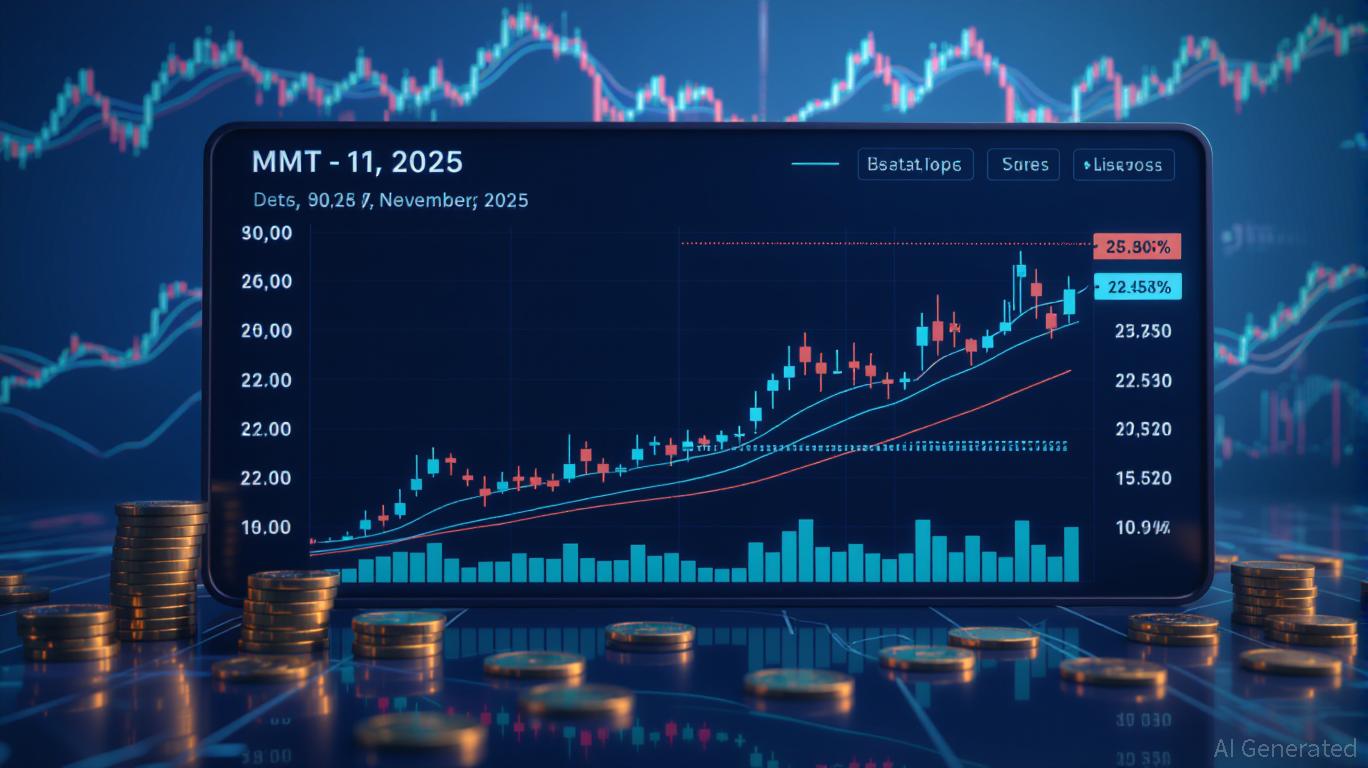Astar 2.0 Debut and Its Impact on the Blockchain Landscape
- Astar 2.0 emerges as a strong contender in institutional blockchain adoption through Polkadot-based scalability and interoperability innovations. - Institutional confidence grows with $3.16M ASTR purchase, 20% QoQ wallet growth, and partnerships with Sony , Casio, and Japan Airlines. - Astar's 6-second block time, 150k TPS throughput, and Chainlink CCIP integration contrast with Bitcoin/Ethereum's scalability struggles and ETF outflows. - Projected $0.80–$1.20 ASTR price by 2030 hinges on Evolution Phase
Technological Innovations: Astar 2.0's Competitive Edge
By implementing Polkadot’s asynchronous backing protocol, Astar 2.0 has dramatically improved its operational efficiency. With block times reduced to 6 seconds and throughput reaching 150,000 transactions per second (TPS),
Additionally, Astar’s partnership with

Institutional Adoption: Astar's Growing Appeal
Interest from institutional players in Astar 2.0 has accelerated in 2025,
These achievements contrast sharply with the difficulties faced by Bitcoin and Ethereum ETFs, which saw notable capital outflows in 2025. For example, Ethereum ETFs experienced $210.43 million in withdrawals over five days, while Bitcoin ETFs lost $543.59 million in just three days,
Market Dynamics and Future Roadmap
Although ASTR’s current market value is still modest compared to Bitcoin and Ethereum—as of 2025—it holds a promising long-term perspective.
The Startale App, scheduled for rollout in early 2026, will centralize ASTR management and ecosystem engagement, while the Plaza integration will boost interoperability throughout the
Challenges and Considerations
Despite its advantages, Astar must contend with certain challenges.
Conclusion: Astar 2.0 and the Future of Institutional Investment
Astar 2.0’s technological flexibility, rising institutional support, and strategic vision make it a strong contender to outperform legacy cryptocurrencies over time. While Bitcoin and Ethereum continue to face hurdles with scaling and regulation, Astar’s emphasis on enterprise applications and interoperability presents a compelling alternative for institutions aiming to safeguard their investments for the future. As the Web3 space evolves, Astar’s success in connecting blockchain advancements with practical use cases will likely be key to its role in transforming institutional investment.
Disclaimer: The content of this article solely reflects the author's opinion and does not represent the platform in any capacity. This article is not intended to serve as a reference for making investment decisions.
You may also like
Solana News Today: "Solana Treasury Allocates Billions in Staking, Offering 7.7% Returns Amid Ongoing Market Skepticism About Crypto Rebound"
- Upexi , a Nasdaq-listed Solana treasury firm, reported $66.7M net income in Q1 2026, driven by $78M in unrealized gains from its 2.18M SOL holdings. - The Solana treasury sector now holds 24.2M SOL ($3.44B), with Upexi ranking fourth and staking yields averaging 7.7% as a corporate asset class. - Market volatility triggered defensive moves like Upexi's $50M share buyback, while its stock trades at 0.68x NAV amid broader crypto skepticism. - Solana's on-chain activity outpaces Ethereum , with TVL reaching

COAI's Significant Price Decline: The Result of Leadership Instability, Ongoing Legal Issues, and Ambiguous Regulatory Environment
- COAI Index fell 88% YTD in 2025, driven by AI/crypto AI sector selloff amid governance failures and regulatory uncertainty. - C3.ai's leadership crisis and unresolved lawsuit eroded investor trust, compounding COAI's decline as index cornerstone. - Vague CLARITY Act left AI-based crypto projects in legal gray zones, triggering risk-off trading toward established tech stocks. - C3.ai's $116.8M Q1 loss and sector-wide weakness highlighted structural risks despite 21% revenue growth. - Analysts debate if CO

MMT Value Forecast and Investor Outlook for November 2025: Evaluating Reliability During Economic Changes
- MMT token surged 1,300% in Nov 2025 due to Binance listings, airdrops, and institutional investments. - 1607 Capital increased MMT-linked fund stake by 84.7%, but dividend sustainability remains unclear. - Fed policy and missing inflation data (due to 2025 government shutdown) cloud macroeconomic alignment. - MMT's volatility ($4.40 to $2.54) highlights speculative nature despite structural catalysts. - Long-term credibility depends on macroeconomic clarity and Fed policy shifts, not just exchange-driven

LUNA Declines by 0.62% as Ongoing Yearly Downtrend Persists in Uncertain Market Conditions
- LUNA fell 0.62% on Nov 16, 2025, continuing an 80.61% annual decline amid crypto market volatility. - The drop reflects macroeconomic pressures, regulatory scrutiny, and waning investor risk appetite in digital assets. - Technical analysis shows broken support levels and weak buying pressure, indicating a prolonged bearish phase. - Backtesting reveals sharp declines often trigger panic selling and sector-wide market erosion, compounding losses. - Prolonged depreciation risks eroding investor confidence u